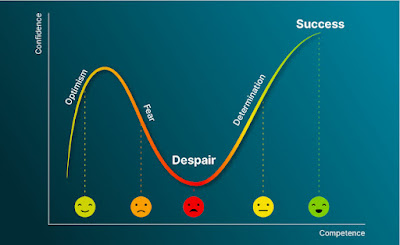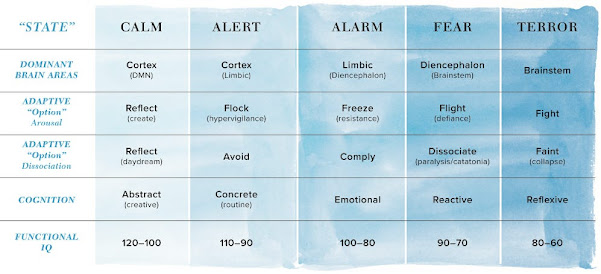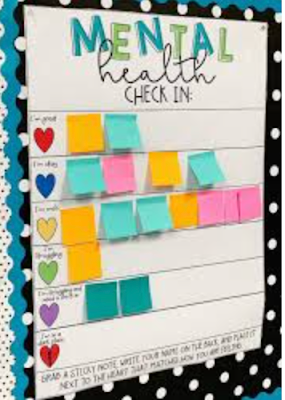Restorative Practice is a waka we're currently boarding at Te Māhuri Mānuka. As with any school, some staff are already seated and ready to go, others are tentatively finding their spot, and some are possibly hanging at the back of the line deciding if this is a journey they want to embark on.
Two day PLD sessions can be long and tiresome, often only made bearable with a good lunchtime spread and strong coffee. While the coffee on offer was devastatingly instant, the knowledge, skills, and absolute conviction with which this content was offered was the best I've seen in a long time.
Marg Thorsborne is the Restorative Practice guru, and an incredibly powerful facilitator. If ever you are offered the opportunity to listen to this wahine toa, take it. I was absolutely hooked from the moment Marg stood and acknowledged mana whenua, throughout all the quirky anecdotes from the coal face of her experiences, to the final moments when she sent us away to go forth and restore the ruptures.
Ideas taken from the day
CONNECT BEFORE CONTENT!
- Kids need to recognise their own feelings too.
- Interoception - sensing internal signals from your body. Helps you understand what's going on inside you.
- We need to move away from behaviourism - that behaviours are acquired through conditioning.
- Zero tolerance is nonsense.
- There is no 'one size fits all' model
- Stand downs allow breathing time and a break/reset (I don't see a problem with this if all other avenues have been exhausted).
- PB4L - contingent on 'good behaviour.' It's reward for compliance. Extrinsically motivated. Think Skinner (human behaviour conditioning) and Pavolv (animals for goodness sake!)
- If we're going to use PB4L, let's call it PC4L - Positive Culture or Climate for Learning.
- We are trying to create good habits in our young people. Neuroscience - practise literally changes your brain. "Perfect practice makes perfect!"
- It can take 28 focused repetitions to unconsciously competent at something. Nathan Wallace says 90!
- We want to bridge the gap between home and school. Expectations can narrow the gap. Kids learn 'code switching' - learn the rules and play by the rules.
- For teachers - Be authentic, be genuine. Allow vulnerability.
- Unattended ruptures cause the erosion of trust.
- Teach what shame and pride are in class!
- When the brain is in cognitive shock the rational brain shuts down, leaving the limbic (emotional brain) to say 'piss off' and the reptilian brain (stem) to go into fight/flight/freeze mode.
Very interesting to note when I think of some of our cherubs.
Bruce Perry
- Shame is feeling bad about yourself as a person.
- An acronym for easy relationship building
T - Touch (a pat on the back, for example)
U - Use the child's name
M - Make eye contact
S - Smile! - Use a check in system when kids arrive at school. Zones of Regulation is too broad!
Key - 1. Great, 2. Okay, 3. Meh, 4. Struggling, 5. I'm having a tough time (need a check-in), 6. Not doing good.
Fabulous Quotes
- "Kids with trauma history don't need more punishment. And quite frankly, they don't need more stickers." - Dr Ross Greene
- Perfect practice makes perfect.
- Be curious, not furious!
Great names & reads I need to check out
- Bruce Perry - "States of Cognition"
- Lawrence Steinberg - neuro-science specialist
- Ross Greene - laggin skills - (already on that waka!)
- Marconi Union - "Weightless" Calming waiata - proven to decrease anxiety.
- "The boy who was raised as a dog." Brain function and trauma
- Brenē Brown - Ideas on shame.
- St Luke's Innovative resources
- Bruce Perry short clips from the handouts.
Restorative Practice - What does it look like?
The purpose of Restorative Practice is to
restore the ruptured relationship
Basic Sequence
- Telling the story of what happened (explanation).
- Hearing about the harm (and reaching a shared understanding).
- Acknowledgement of the harm.
- Making a plan to make things right (including follow-up).
Use the scripts - don't be afraid to have them with you if you are facilitating. You can say, "there are a lot of important questions I need to ask so we can make sure we have all the information needed to restore this relationship. I don't want to miss anything out..."
Pre-conference Interview Show people involved a map of the seating plan.
Check the facts - chat 1:1 with people involved.
Hand out briefing sheet Student guide & parent guide. Use one from Marg with our school stamp on it.
Introduction -
Thank people for coming.
"We're here to talk about ... which happened yesterday, when ... happened."
"We're going to talk about the incident in a moment, but right now let's go back to the beginning. What led up to that incident?"
Telling the story/Exploring the harm -
The person responsible always goes first.
"Tell us what happened. How did this unfold?
"What were you thinking?"
"What have you thought about since?"
What do you think it was like for...?"
"Anyone else effected? In what way?"
"What was going on for you when you did that?" (the person responsible)
"What does ... look like?" Eg. 'He's always picking on me', 'She's mean to me.'
"What has stopped you from saying how you feel/speaking out?" (if someone has acted in revenge for a 'wrong' done to them)
"How do you think this is impacting on your friends in the class?"
Check for story sanitisation by the child (when a parent is involved).
Person harmed
"What did you think when ... happened?"
"What have you thought about since?"
"How has this effected you? What has changed for you?"
"How did ... react when you told them?"
"What was the worst of it?"
Support person
Person harmed supporter goes first, then supporters of person responsible.
"What did you think when you heard/saw?"
"How do you feel about what happened?"
"What changes have you seen in ...?"
"What's it been like for you?"
"What's been the hardest/worst part for you?"
During Acknowledgement and Apology -
"Now that you've heard from everyone, what do you think about your role in all this?"
"What do you now understand?"
"How can you let ... know that you now understand?"
"Is there anything you could say at this point that might begin to make things right?"
Developing the plan -
Person harmed goes first.
"What would you like to see happen to repair the harm to you?"
"What suggestions do you have that might address the issues you've mentioned?"
Does the plan need to be in writing?
As a facilitator -
Don't make suggestions!
If people are interrupting - use a talking rākau.
If someone is fibbing - "I hear the words. But I have a sense they're not genuine."
Don't say
- What happened?
- What rule was broken?
- Who's to blame?
- What punishment is deserved?
Ask the questions and then shut up.
It is ok to come back to an incident that occurred a few days prior - "Can we talk for a few moments about something that was said yesterday?"
Follow up must happen!
Questions I have going forward for RP at Te Māhuri Mānuka
- What is the pastoral nature of Team Leaders?
- Are we at risk of staff becoming neglectful? (indifferent/disengaged?)
- Do we need a Te Māhuri Mānuka brief sheet for parents and students (for more serious issues)?
- What warrants parent participation? Do we need a severity scale?
- Who is on the facilitation team? Are staff able to sit in on a RP hui? Who will run the hui?
- How can we ensure staff are getting info on what when down at a RP hui?
- What's our school vision for RP?
















